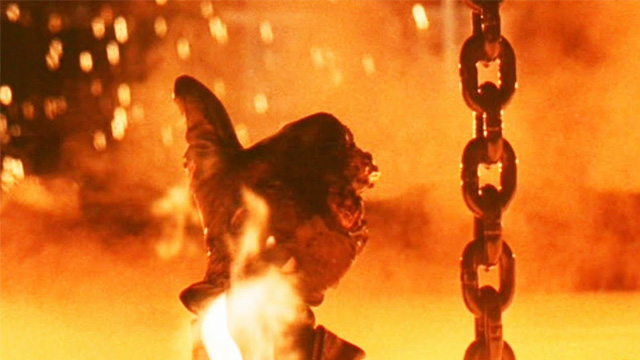A new era of filmmaking at the intersection of technology and art, or how game engines simplify and reduce the cost of producing big cinema
One of the main tasks of any film producer is to maximize saving the investors’ budget and make the future film not only a masterpiece but also highly profitable. Moreover, positive results from production and distribution expenses are a direct path to bigger budgets and more serious projects. It is unknown who and when invented filming movies against a huge screen, but it caused a true revolution.
Our team has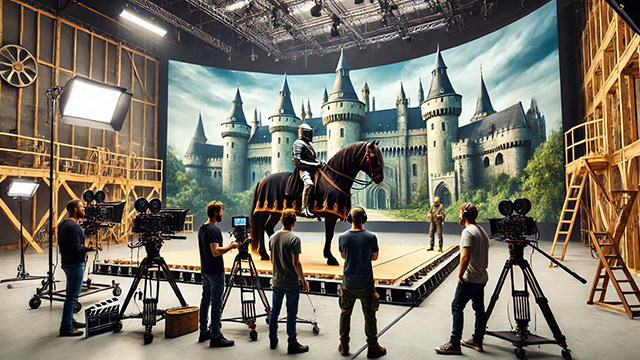 long been following the development of this technology and regularly uses its elements in our projects, creating a “Wow!” effect for clients. In this article, we will analyze how game engines reduce budgets, save time, and expand creative possibilities.
long been following the development of this technology and regularly uses its elements in our projects, creating a “Wow!” effect for clients. In this article, we will analyze how game engines reduce budgets, save time, and expand creative possibilities.
Yes! Modern filmmaking is undergoing a technological revolution comparable to the transition from film to digital. Game engines such as Unreal Engine and Unity, originally created for video game development, have now become indispensable tools in the arsenal of directors, producers, and cinematographers. These platforms allow creating virtual worlds, controlling lighting and cameras in real time, and integrating CGI elements during shooting rather than in post-production. Arguments? Easy! :
Argument 1: Virtual sets instead of physical constructions.
Previously, creating large-scale sets required months of work and huge budgets. For example, for the film Titanic in 1997, a reduced copy of the ship had to be built, and for The Lord of the Rings — entire villages. After filming, such constructions were often dismantled, making the process expensive and environmentally unfriendly. Modern studios replace physical sets with “virtual sets” rendered in real time. For example, in the series The Mandalorian, the e nvironment is projected onto giant LED screens (StageCraft technology by Industrial Light & Magic). This allows:
nvironment is projected onto giant LED screens (StageCraft technology by Industrial Light & Magic). This allows:
- Changing locations in seconds (from desert to space station).
- Controlling lighting and reflections on the fly.
- Avoiding costs of construction and logistics.
According to producer Jon Favreau, using Unreal Engine reduced The Mandalorian’s budget by 30% compared to traditional methods.
Argument 2: Digital extras — crowds without people.
Scenes with thousands of participants (battle episodes, city crowds) have always been complex and expensive. For Braveheart in 1995, 1,600 extras were used, and in Gladiator (2000), live actors were combined with CGI. Game engines generate “3D crowds” using AI algorithms.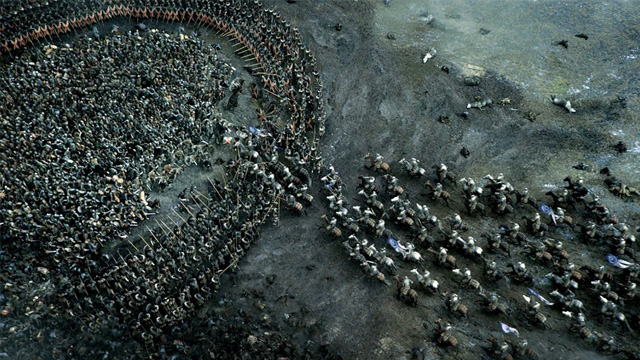 For example:
For example:
- In Fast & Furious 9 (2021), the crowds in stands and pedestrians were created in Unreal Engine.
- In Game of Thrones, the engine was used to animate armies.
- No need to pay, feed, or dress hundreds of extras.
- Control over every character: poses, facial expressions, movement.
Argument 3: Fantasy worlds without limits.
Creating fantastic universes like Pandora from Avatar required years of work and tens of millions of dollars. Even for The Matrix (1999), complex sets had to be built and combined with CGI.
Now game engines allow designing worlds in “real time.”
For example:
- In Dune (2021), the sandy landscapes of Arrakis were partially created in Unreal Engine.
- For Countess Bathory (2024), the engine was used to model 16th-century castles and supernatural effects.
- Directors can experiment with architecture, landscapes, and even laws of physics without leaving the virtual environment.
Argument 4: Real-time rendering — instant results and creative flexibility.
Previously, rendering CGI scenes took days or even weeks. For example, in Avatar (2009), some shots took 30 hours each to render. This slowed the process, limited experimentation, and required huge computing resources.
Real-time rendering t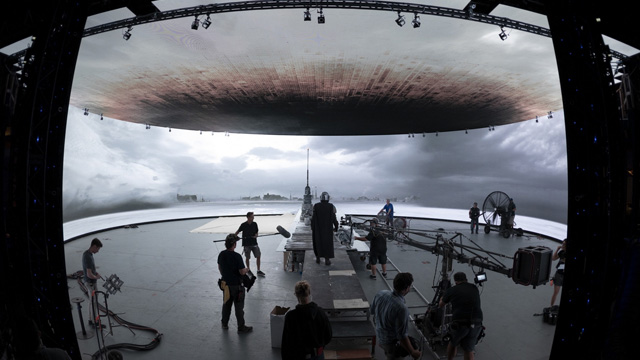 echnology allows visualizing scenes instantly. Directors and cinematographers can:
echnology allows visualizing scenes instantly. Directors and cinematographers can:
- Adjust lighting, textures, and camera angles directly on set.
- See the final result without waiting for post-production.
- Make changes on the fly, which is especially important for dynamic projects.
In Fast & Furious 10 (2023), scenes of bridge destruction and chases through virtual cities were rendered in real time. This allowed operators to immediately assess how CGI interacts with live actors and equipment.
Argument 5: Previsualization — risk reduction and time saving.
Previsualization (previs) was done in simplified 3D programs, and sometimes even hand-drawn. This required additional time and did not always accurately convey the director’s vision.
Game engines allow creating “detailed previsualization” almost indistinguishable from the final render.
For example:
- For Mission: Impossible — Dead Reckoning (2023), the entire stunt with Tom Cruise’s motorcycle jump off a cliff was first recreated in Unreal Engine. This helped precisely calculate trajectory, camera positions, and lighting.
- In the animated film Elemental (2023) from Pixar, the engine was used to test interactions of elements (fire, water) before main work began.
By the way, DNEG studio calculated that previsualization in game engines reduces the time for approving complex scenes by 40%.
Argument 6: Integration of motion capture and character animation.
Bringing digital characters to life (for example, Gollum in The Lord of the Rings) required separate motion capture filming and months of post-processing.
Game engine systems synchron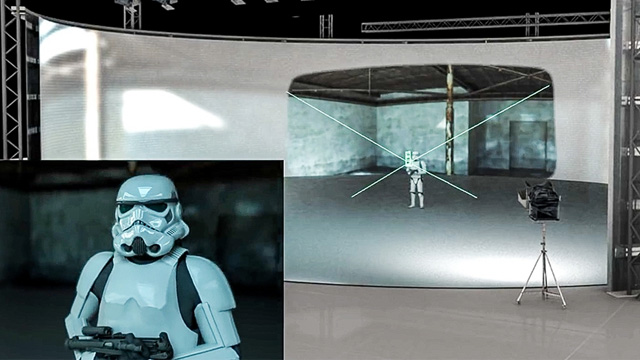 ize motion capture with the virtual environment in “real time.” Actors in sensor suits immediately see themselves in the roles of their characters against CGI backgrounds.
ize motion capture with the virtual environment in “real time.” Actors in sensor suits immediately see themselves in the roles of their characters against CGI backgrounds.
- In Space Jam: A New Legacy (2021), LeBron James acted alongside animated Looney Tunes characters, whose movements were processed through Unreal Engine right on set.
- The Witcher series uses motion capture for monsters like the “kikimora” so actors can react naturally to their movements.
- Actors immerse themselves in roles by seeing digital partners.
- Directors immediately assess chemistry between live and CGI characters.
- Environmental benefits: Less waste — more sustainability
Virtual sets do not require physical materials. This:
- Reduces the production’s carbon footprint.
- Eliminates the need to destroy sets.
- Allows digital assets to be reused in other projects.
Warner Bros studio, for example, stated that switching to virtual sets for The Matrix 4 (2021) reduced construction waste by 75%.
Argument 7: Educational aspect: Democratization of filmmaking.
Creating films with CGI was only available to large studios with multimillion-dollar budgets. Free engines like Unreal Engine and Blender allow independent directors to:
- Create high-quality visual effects without license fees.
- Use ready-made 3D models from marketplaces (for example, Quixel Megascans).
- Learn through online courses and communities.
Blade Ru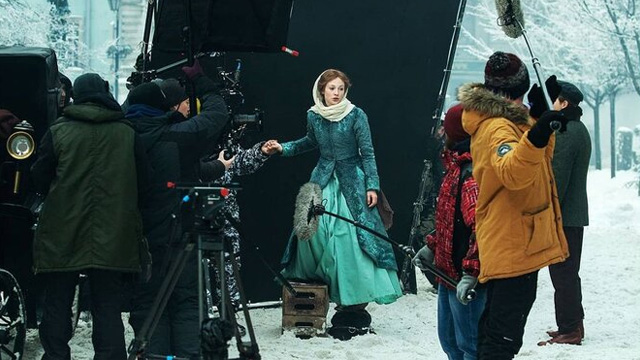 nner 2049 (2017) used Unreal Engine for previsualization, but today even film school students can use the same tools for their shorts.
nner 2049 (2017) used Unreal Engine for previsualization, but today even film school students can use the same tools for their shorts.
Russian studios keep up with Hollywood and actively implement game engines not only in blockbusters but also in independent films. For example, VGIK students use Unreal Engine and Blender for their theses, creating fantasy worlds and historical reconstructions without multimillion budgets.
As producer Timur Bekmambetov noted: “Virtual production technologies erase the boundaries between Hollywood and Russian cinema. Now we can compete not with money, but with ideas.”
Examples from Russian cinema: Silver Skates (2020)
Director Mikhail Lokshin.
The film Silver Skates is a historical romantic drama set in winter St. Petersburg at the end of the 19th century. Creating the atmosphere of a snowy city with canals, palaces, and ice balls required large-scale sets and complex visual effects. However, filming in real St. Petersburg in winter would have been too expensive and weather-dependent.
The production team used Unreal Engine and virtual production technologies:
1. Virtual sets:
- Ice canals, palace facades, and even Nevsky Prospect were created in Unreal Engine’s 3D environment.
- Ice scenes were filmed in a pavilion with LED screens projecting pre-rendered landscapes. This allowed actors to see the environment in real time rather than imagine it against a green screen.
2. Dynamic lighting:
- Sunset light, ice reflections, and even actors’ breath in the cold were adjusted through the engine, adding realism to scenes.
3. Crowds and special effects:
- Crowds at celebrations and skaters on the rink were partially created using CGI animation in Unreal Engine.
- Budget savings: According to producer Sergey Selyanov, using the game engine reduced set construction and location shooting costs by 25%.
- Creative freedom: Director Mikhail Lokshin noted he could experiment with camera angles and “move” the viewer through space, for example, showing St. Petersburg from a bird’s-eye view or “gliding” over the Neva ice with the characters.
- Environmental friendliness: Virtual sets helped avoid tons of construction waste and reduced the carbon footprint from equipment transport.
“I used to fear that tech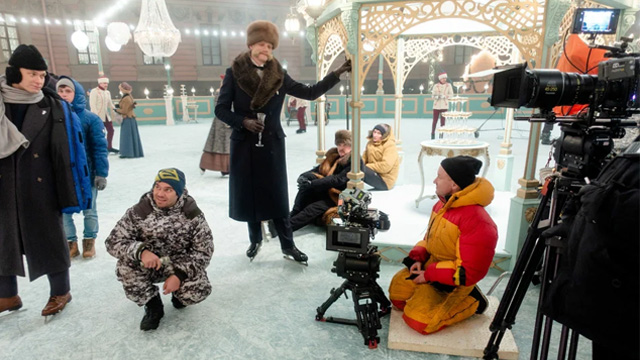 nology kills the magic of cinema. But when I saw winter St. Petersburg come alive on screens behind the actors, I realized: this is magic. We are not limited by weather or budget — only by imagination,” says Mikhail Lokshin, director of Silver Skates.
nology kills the magic of cinema. But when I saw winter St. Petersburg come alive on screens behind the actors, I realized: this is magic. We are not limited by weather or budget — only by imagination,” says Mikhail Lokshin, director of Silver Skates.
Coma (2020)
- Nikita Argunov’s sci-fi thriller used Unreal Engine to create the virtual world “Coma” — a labyrinth of the main character’s memories. The engine helped visualize abstract spaces and reality-distorting effects.
Major Grom: Plague Doctor (2021)
- In the Bubble comic adaptation, some action scenes (explosions, rooftop chases) were previsualized in the game engine to precisely coordinate stunt performers and operators.
What awaits us in the near future?
1. Full virtual reality (VR) on set
- Directors and actors will be able to interact with the world through VR headsets, and cameras will capture their actions in digital space. Complete creative freedom.
2. Neural networks for content generation
- AI similar to MidJourney or DALL-E will create textures, backgrounds, and even characters from text prompts.
3. Interactive cinema
- Viewers will be able to influence the plot through game interfaces, like in Black Mirror: Bandersnatch (2018).
Game engines not only save time and money — they change the very philosophy of filmmaking. Directors become “demiurges,” able to create worlds from nothing, and viewers receive stories once considered impossible. Thanks to these technologies, cinema becomes a symbiosis of art and play, where the only limit is the creator’s imagination. And who knows, maybe in a decade the Oscar will be awarded not to a person but to an algorithm that helped bring a new cinematic masterpiece to life. God forbid, of course! We’re on the side of humans!
